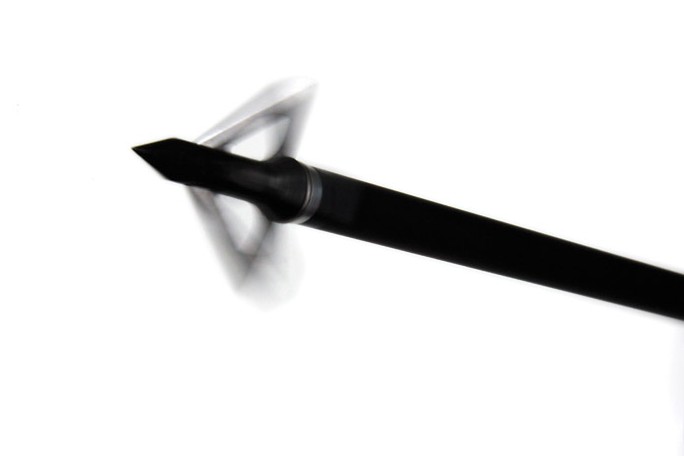To get the most accuracy out of your hunting set-up, make sure your arrows fly true
Advertisement
It happens every deer season: hunting buddies stop by my cabin with brand new arrows, ready to hit the woods. “Did you spin check them?” I inevitably ask, wondering if they’ve performed the standard test for making sure the broadheads are in line with the shaft.
“Well, no,” they inevitably answer.
Advertisement
The problem? If the broadheads are out of line, the arrows won’t shoot straight. And that’s where broadhead tuning—the aligning of the broadhead with the shaft—comes in.
Certainly, most hard-core archery hunters know how important broadhead tuning is for getting the utmost in accuracy out of their hunting set-ups. For those of us who have been at the game for many years, it’s something we take for granted, and we often assume anyone who picks up a compound, traditional or crossbow also knows how important tuning is.
Truth be known, however, most newcomers to the sport, as well as many archers with some seasons under their belts, know very little about it. But they should: how well the broadhead is aligned with the shaft is the number one factor affecting arrow flight. Bowhunters who practise with field points often overlook that—they simply screw in their broadheads and assume they’ll fly the same as field points.
Advertisement
In a perfect world, that would happen. In reality, the broadhead will steer the arrow or bolt in the direction it’s pointing. The more the broadhead is out of line with the shaft, the more it will steer the arrow away from the direction you intended.
There are two ways to spin check your arrow to determine whether the broadhead is out of alignment with the shaft. And it doesn’t matter how minuscule the wobble is, it will affect the accuracy of the arrow. First, you can spin your broadhead-tipped arrow by hand on a hard surface, as if you were spinning a top. Try to get it to spin upright on the tip as long as you can. If the broadhead’s not aligned, there will be a distinct wobble.
The second method is to use a spin-check tool. I prefer this option, as it not only reveals whether the broadhead is aligned, but also what direction it’s pointed in. By slowly rotating the shaft and observing the point of the broadhead, I can determine which is the high point of the rotation. Quite often, I can simply press the tip of the broadhead on a hard surface against the direction the broadhead is pointing to correct the wobble.
Most times, however, the problem is with the insert—especially if you’re using a high-quality broadhead with a solid-steel ferrule. First, make sure the broadhead is fit snugly into the insert. If there’s still a wobble, it could be the insert was improperly seated into the shaft. If that’s the case, you need to reposition it. Using a lighter (not a torch), heat the end of the shaft to soften the glue holding the insert in place. Be careful, as too much heat can burn and ruin the carbon shaft.
Next, using a broadhead wrench, rotate the insert inside the shaft by turning the broadhead as if you were tightening it. Don’t force it too hard. Rotate the insert a full turn and spin check the arrow again to check the alignment. You may need to do this several times before it properly aligns and spins true.
Whether you spin check your arrows by hand or with a tool, it only takes a few minutes to correct one of the worst accuracy-robbing problems that plague bowhunters. You owe it to yourself and to the animals you hunt to make sure your arrows fly true.
Gadgets
There are several commercially made, reasonably priced spin-check tools available. I keep an Arrow Inspector (pictured) at my cabin. It can be purchased online from Pine Ridge Archery or less than $35. You can also construct your own spin-check tool. A machinist friend with time on his hands made mine, and it now has a permanent home in my basement workshop.

